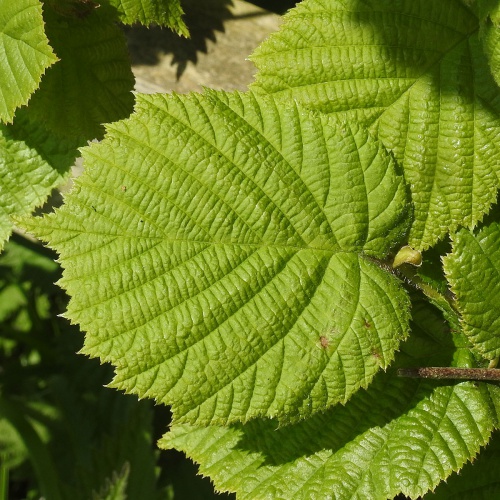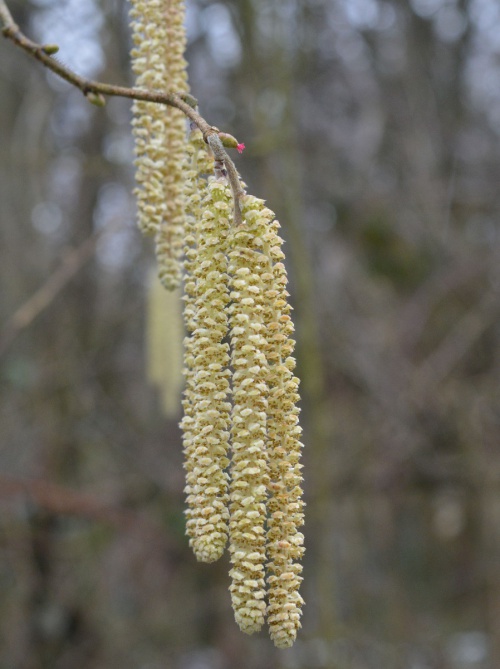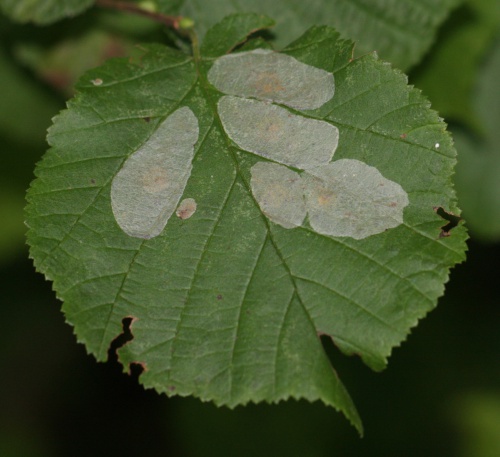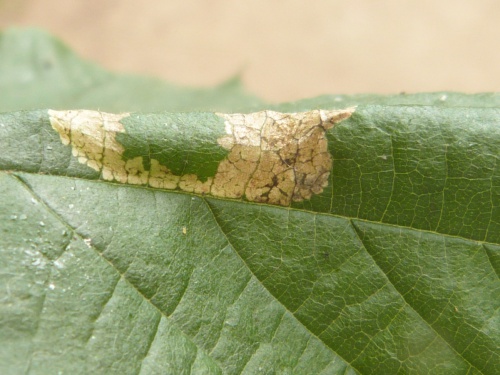Hazel - Corylus avellana
Shrub to 6 metres, rather upright with smooth brown bark. Leaves rounded, sharp pointed, toothed, downy. Flowers appearing before the leaves. Male catkins yellow, pendent, female flowers tiny and bud like with red styles. Fruit a nut, solitary or several together, each enclosed in a leafy husk and is edible. Fresh twigs usually with red-tipped glandular hairs.
Woods and hedgerows.
January to March.
Deciduous.
Common throughout Britain.
Common in Leicestershire and Rutland. In the 1979 Flora survey of Leicestershire it was found in 421 of the 617 tetrads.
Leicestershire & Rutland Map
Enter a town or village to see local records
MAP KEY:
Yellow squares = NBN records (all known data)
Coloured circles = NatureSpot records: 2020+ | 2015-2019 | pre-2015
UK Map
Species profile
- Common names
- Hazelnut, Hazel
- Species group:
- Trees, Shrubs & Climbers
- Kingdom:
- Plantae
- Order:
- Fagales
- Family:
- Betulaceae
- Records on NatureSpot:
- 428
- First record:
- 01/07/1998 (John Mousley)
- Last record:
- 01/04/2024 (Pochin, Christine)
Total records by month
% of records within its species group
10km squares with records
The latest images and records displayed below include those awaiting verification checks so we cannot guarantee that every identification is correct. Once accepted, the record displays a green tick.
In the Latest Records section, click on the header to sort A-Z, and again to sort Z-A. Use the header boxes to filter the list.
Latest images
Latest records
Nut Leaf Blister Moth
The caterpillars form a rounded, silvery blotch on the upper surface of Hazel leaves. There can be several mines to one leaf and the mines are very visible in late summer and autumn.
Phyllonorycter nicellii
The caterpillars feed on the underside of Hazel leaves, causing a bulge on the upper surface between two veins which is usually brown with a patch of green.


































